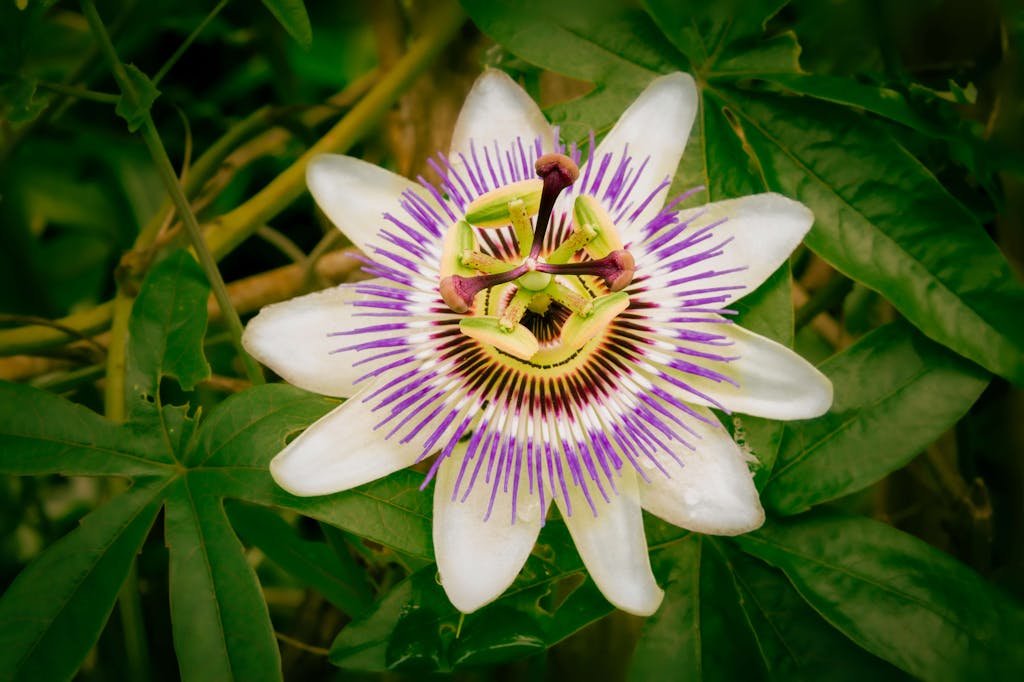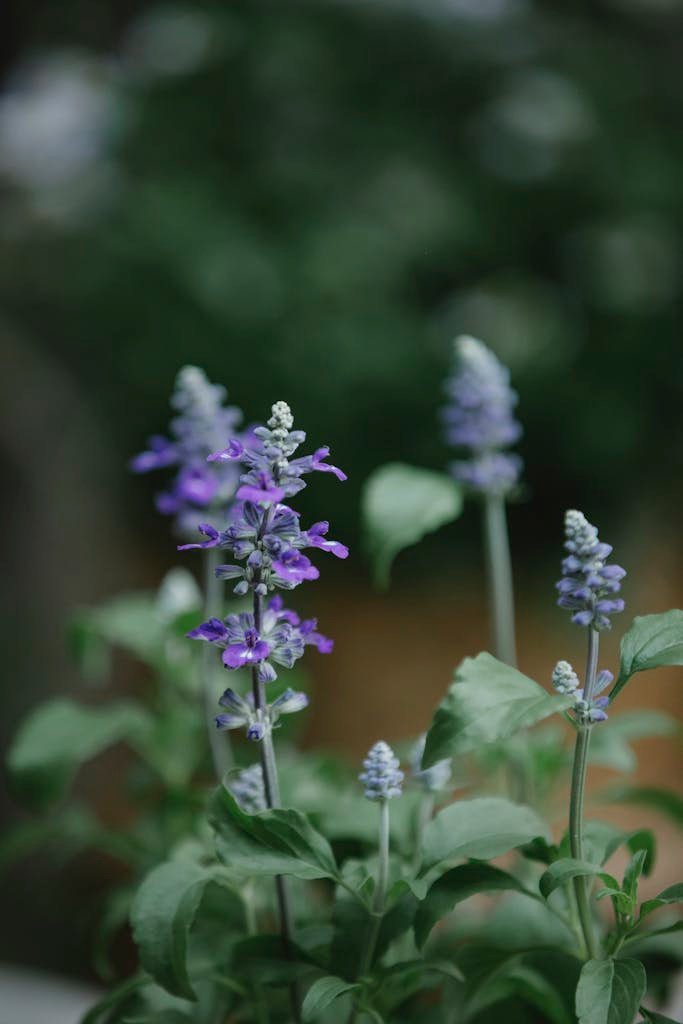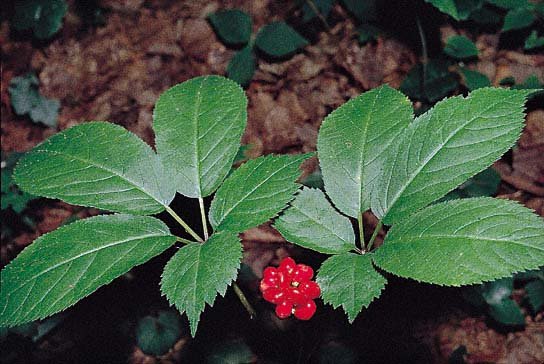Passion Flower – Passiflora (alatocaerulea)
When it comes to the world of exotic blooms, the Passion Flower, specifically Passiflora alatocaerulea and Passiflora incarnata, stands out with its mesmerizing beauty and intriguing history. These flowers aren’t just a feast for the eyes; they’re steeped in symbolism and have been celebrated for their medicinal properties for centuries.
Passiflora incarnata, commonly known as the Maypop, along with its cousin Passiflora alatocaerulea, showcases a unique blend of vibrant colors and complex structures that captivate gardeners and nature lovers alike. They’re not only a visual spectacle but also play a crucial role in the ecosystem, supporting pollinators such as bees and butterflies. Let’s delve into the fascinating world of these passion flowers, exploring their allure and the secrets they hold.
Key Takeaways
- The Unique Beauty and Symbolism: Passiflora alatocaerulea and Passiflora incarnata captivate with their intricate designs and colors, symbolizing peace, tranquility, spirituality, and faith. Their rich symbolism and aesthetic appeal make them fascinating subjects for both gardeners and those interested in floral symbolism.
- Medicinal Properties: These passion flowers are celebrated for their therapeutic benefits. Passiflora incarnata, in particular, is noted for its anxiolytic and sedative properties, offering a natural remedy for anxiety and insomnia, validated by scientific research.
- Support for Pollinators: Passiflora species play crucial roles in ecosystems by providing nectar for a variety of pollinators, including bees, butterflies, and hummingbirds. Their cultivation supports biodiversity and the survival of these essential creatures.
- Ease of Cultivation and Care: Both Passiflora alatocaerulea and Passiflora incarnata thrive in well-drained soils with full sun to partial shade, requiring moderate watering and minimal maintenance, making them accessible to a wide range of gardeners.
- Ecological and Conservation Value: Beyond their beauty, these passion flowers contribute to the health of ecosystems by sustaining pollinator populations. Incorporating them into gardens and landscapes promotes environmental conservation efforts.
- Research and Therapeutic Potential: Continuous studies on Passiflora incarnata underscore its potential in treating sleep and anxiety disorders, highlighting the intersection between traditional herbal medicine and contemporary scientific validation.
The Mesmerizing Beauty of Passiflora alatocaerulea and Passiflora incarnata
The allure of Passiflora alatocaerulea and Passiflora incarnata extends beyond their complex structures and vibrant colors. These passion flowers captivate with their unique beauty, characterized by a harmonious blend of colors and an intricate arrangement of petals, sepals, and coronas. They’re not only a feast for the eyes but also hold deep symbolic meanings across different cultures.
Symbolic Significance
Passiflora alatocaerulea, with its sky-blue petals contrasted against a backdrop of lush greenery, symbolizes peace and tranquility. On the other hand, Passiflora incarnata, often adorned with light purple to lavender hues, represents spirituality and faith. The structure of the flowers, with their radial filaments, is reminiscent of the crown of thorns from Christian iconography, thus named “passion” flower. This symbolic depth adds layers to their beauty, entrancing not just gardeners but also those who delve into the symbolism of flowers.
Ecosystem Role and Medicinal Uses
Both species play crucial roles in supporting local ecosystems. Their fragrant blossoms attract pollinators such as bees and butterflies, fostering a vibrant habitat. Furthermore, Passiflora incarnata is renowned for its medicinal properties. Research highlights its effectiveness as a natural remedy for anxiety and insomnia. This dual aesthetic and functional value make these flowers valuable beyond their visual appeal.
Cultivation and Care
Thriving in well-drained soil and areas with full sun to partial shade, Passiflora alatocaerulea and Passiflora incarnata are relatively easy to cultivate. They require moderate watering and some species may need protection from cold temperatures. Gardeners are drawn to these species not only for their beauty and symbolism but also for their resilience and ease of care.
By diving into the world of Passiflora, one discovers a rich tapestry of beauty, symbolism, and utility. These flowers are more than just visually stunning; they’re integral to ecosystems, carry deep meanings, and offer therapeutic benefits, proving that nature’s creations are infinite in their wonder.
The Symbolism Behind Passion Flowers
The Passion Flower, particularly Passiflora alatocaerulea and Passiflora incarnata, carries a rich tapestry of symbolism rooted in history and culture. These flowers are not just a feast for the eyes but also embody deep spiritual and emotional meanings.
In the 15th and 16th centuries, Christian missionaries adopted the Passion Flower as a symbol to explain the Passion of Christ to indigenous peoples in the Americas. The various parts of the flower were used to represent significant aspects of the Passion. The ten petals and sepals were said to symbolize the ten faithful apostles, excluding Judas and Peter. The tendrils represented the whips used in the flagellation of Christ, the ovary was seen as the hammer of the crucifixion, the five anthers for the five wounds, and the three stigmas for the three nails that pinned Christ to the cross.
Beyond its Christian symbolism, the Passiflora incarnata has been revered in traditional medicines across different cultures. Native Americans used it as a sedative and to treat wounds, earaches, and liver problems. Modern research supports its sedative and anti-anxiety effects. According to a study published in the “Journal of Clinical Pharmacy and Therapeutics,” Passiflora incarnata exhibits significant anxiolytic (anxiety-reducing) activity, making it a potential natural alternative for the management of anxiety disorders.
In addition to their symbolic and medicinal properties, Passion Flowers convey a message of peace and spirituality, making them popular in gardens and spaces meant for reflection and meditation. Their ability to attract pollinators such as bees and butterflies adds another layer of significance, emphasizing the interconnectedness of life and the importance of conserving natural habitats.
Cultivating Passiflora not only beautifies a space but also invites gardeners to delve into a world of rich history, symbolism, and the promise of tranquility. Despite their exotic appearance, Passiflora alatocaerulea and Passiflora incarnata are resilient and can thrive with minimal care, making them accessible to a wide range of gardeners.
The Medicinal Properties of Passiflora alatocaerulea and Passiflora incarnata
Passiflora alatocaerulea and Passiflora incarnata have long been celebrated not only for their stunning beauty but also for their remarkable medicinal benefits. These passion flowers are not just a feast for the eyes but offer a bounty of health benefits that have been recognized in traditional and modern medicine.
Passiflora incarnata, commonly known as the purple passionflower or maypop, is particularly noted for its calming and sedative properties. Research shows that this passion flower can significantly improve the quality of sleep, making it a popular herbal remedy for insomnia and sleep disturbances. A clinical trial published in the journal Phytotherapy Research highlighted the anxiolytic (anxiety-reducing) effects of Passiflora incarnata, suggesting it as a beneficial treatment for generalized anxiety disorder (GAD).
| Study Objective | Outcome |
|---|---|
| Sleep Improvement | Positive |
| Anxiety Reduction | Significant |
Passiflora alatocaerulea, while lesser-known for its medicinal properties compared to Passiflora incarnata, shares similar health benefits due to its phytochemical composition. This species contains flavonoids and other compounds that contribute to its therapeutic potential, including anti-inflammatory and analgesic properties. It’s this unique chemical makeup that enables Passiflora alatocaerulea to play a pivotal role in herbal medicine traditions.
The leaves and stems of both plants are used in making teas and extracts, which are then employed to treat an array of health conditions. From reducing symptoms of anxiety and insomnia to alleviating pain and inflammation, the scope of their benefits is wide-ranging. Moreover, ongoing investigations into these plants’ pharmacological activities suggest even broader therapeutic applications, including potential roles in treating hypertension and opioid withdrawal.
By incorporating Passiflora alatocaerulea and Passiflora incarnata into herbal remedies, individuals can harness these plants’ medicinal properties to enhance wellness. Whether through direct consumption or as part of a blended herbal formula, the healing power of passion flowers continues to be a subject of interest for both traditional herbalists and contemporary researchers alike.
The Unique Blend of Colors and Structures in Passiflora incarnata and Passiflora alatocaerulea
The Passiflora genus is renowned for its strikingly unique floral structures and an astonishing array of colors, with Passiflora incarnata and Passiflora alatocaerulea standing out for their beauty and complexity. These species demonstrate a mesmerizing blend of colors and intricate designs that not only captivate the human eye but also have significant ecological roles, particularly in attracting pollinators.
Passiflora incarnata, commonly known as the purple passionflower or maypop, showcases flowers with a base color of vibrant purple. Its petals and sepals juxtapose strikingly with a three-dimensional arrangement of filaments that form a captivating crown-like structure, known as the corona. This unique floral arrangement is not just for show; it plays a crucial role in the plant’s reproduction by enticing bees and butterflies for pollination.
Meanwhile, Passiflora alatocaerulea presents a breathtaking spectacle with its large, azure-blue flowers complemented by white and purple accents. What makes this species particularly fascinating is its rare coloration among flowers, a feature that sets it apart in the botanical world. The vivid blue petals are a rarity in nature, making it a prized specimen for botanical gardens and enthusiasts alike. The corona of Passiflora alatocaerulea, similar to that of incarnata, features an intricate pattern that aids in the attraction of pollinators, ensuring the plant’s survival and propagation.
Research into the pollination mechanisms of Passiflora species reveals the importance of these complex floral structures. Studies suggest that the unique color contrasts and corona designs are highly effective in attracting specific pollinators, confirming the evolutionary advantage of their elaborate floral architecture.
- Pollinators Attracted: Bees, butterflies
- Key Structural Feature: Corona
- Passiflora incarnata Colors: Vibrant purple base
- Passiflora alatocaerulea Colors: Azure-blue with white and purple accents
The Role of Passion Flowers in Supporting Pollinators
Passiflora alatocaerulea and Passiflora incarnata, known for their striking beauty and complex floral structures, play a crucial role in supporting pollinators. These passion flowers not only captivate the eye but also provide essential resources for a variety of pollinators including bees, hummingbirds, and particularly butterflies.
Research underscores the ecological importance of these flowers. For example, a study highlighted in the Journal of Pollination Ecology reveals that the elaborate design of passion flower blooms, specifically the vibrant colors and intricate coronas, serve as highly effective attractants for pollinators. The unique structure of Passiflora flowers, involving a series of concentric circles around the central reproductive parts, facilitates an efficient pollination process.
Furthermore, these passion flowers offer rich nectar rewards to their visitors. Passiflora incarnata and Passiflora alatocaerulea are known for their large nectar reserves. This nectar not only fosters pollinator health but also encourages these creatures to return, thereby ensuring consistent pollination. This interaction is pivotal for the survival and propagation of passion flowers, enabling them to thrive in their natural habitats.
In addition to providing nectar, the foliage of Passiflora plants serves as a crucial larval food source for several butterfly species, including the Gulf Fritillary. This symbiotic relationship highlights the significance of Passiflora species in maintaining biodiversity and supporting the life cycles of pollinators.
Given their role in sustaining pollinator populations, cultivating Passiflora alatocaerulea and Passiflora incarnata in gardens and landscapes can contribute significantly to conservation efforts. Gardeners and conservationists alike recognize the value of these plants not just for their aesthetic appeal but also for their environmental impact. Planting passion flowers is a step towards creating a pollinator-friendly environment, supporting the broader ecosystem.
Exploring the Allure and Secrets of Passiflora alatocaerulea and Passiflora incarnata
The enigmatic beauty of Passiflora alatocaerulea and Passiflora incarnata has captivated gardeners and botanists alike. These passion flowers are not only a feast for the eyes but also rich in symbolism and practical benefits. Passiflora alatocaerulea, with its striking blue flowers, is rarer and adds a splash of color to any garden. On the other hand, Passiflora incarnata, commonly known as the purple passionflower or maypop, is renowned for its therapeutic properties and is widely studied for its potential in treating conditions like anxiety and insomnia.
Research into Passiflora incarnata has shown it to possess anxiolytic effects. A study published in the Journal of Clinical Pharmacy and Therapeutics revealed that subjects who took Passiflora incarnata extract reported significant improvements in their sleep quality, underscoring its value in treating insomnia. This research highlights the practical benefits of incorporating Passiflora incarnata into therapeutic practices.
Moreover, both Passiflora alatocaerulea and Passiflora incarnata play a vital role in supporting biodiversity. Their intricate flowers are not only designed to attract the human eye but also serve as important nectar sources for pollinators like bees, hummingbirds, and butterflies. The relationship between these passion flowers and pollinators exemplifies the intricate balance of ecosystems and the importance of plant diversity in sustaining wildlife.
| Pollinator | Nectar Source |
|---|---|
| Bees | Passiflora alatocaerulea |
| Hummingbirds | Passiflora incarnata |
| Butterflies | Passiflora incarnata |
Incorporating Passiflora alatocaerulea and Passiflora incarnata into gardens not only enriches the landscape but also contributes significantly to the conservation of pollinator species. Their alluring beauty, coupled with their ecological and medicinal benefits, makes these passion flowers a valuable addition to any environment focused on sustainability and biodiversity.
Passiflora alatocaerulea and Passiflora incarnata stand out not only for their stunning appearance but also for their significant contributions to health and biodiversity. They’re a testament to nature’s beauty and utility, blending visual appeal with practical benefits. By choosing to grow these passion flowers, gardeners can enjoy their unique charm and support a healthier ecosystem. Whether it’s for their therapeutic benefits or their role in pollination, these plants are a valuable addition to any garden. Embracing them means embracing a piece of nature’s marvel.




